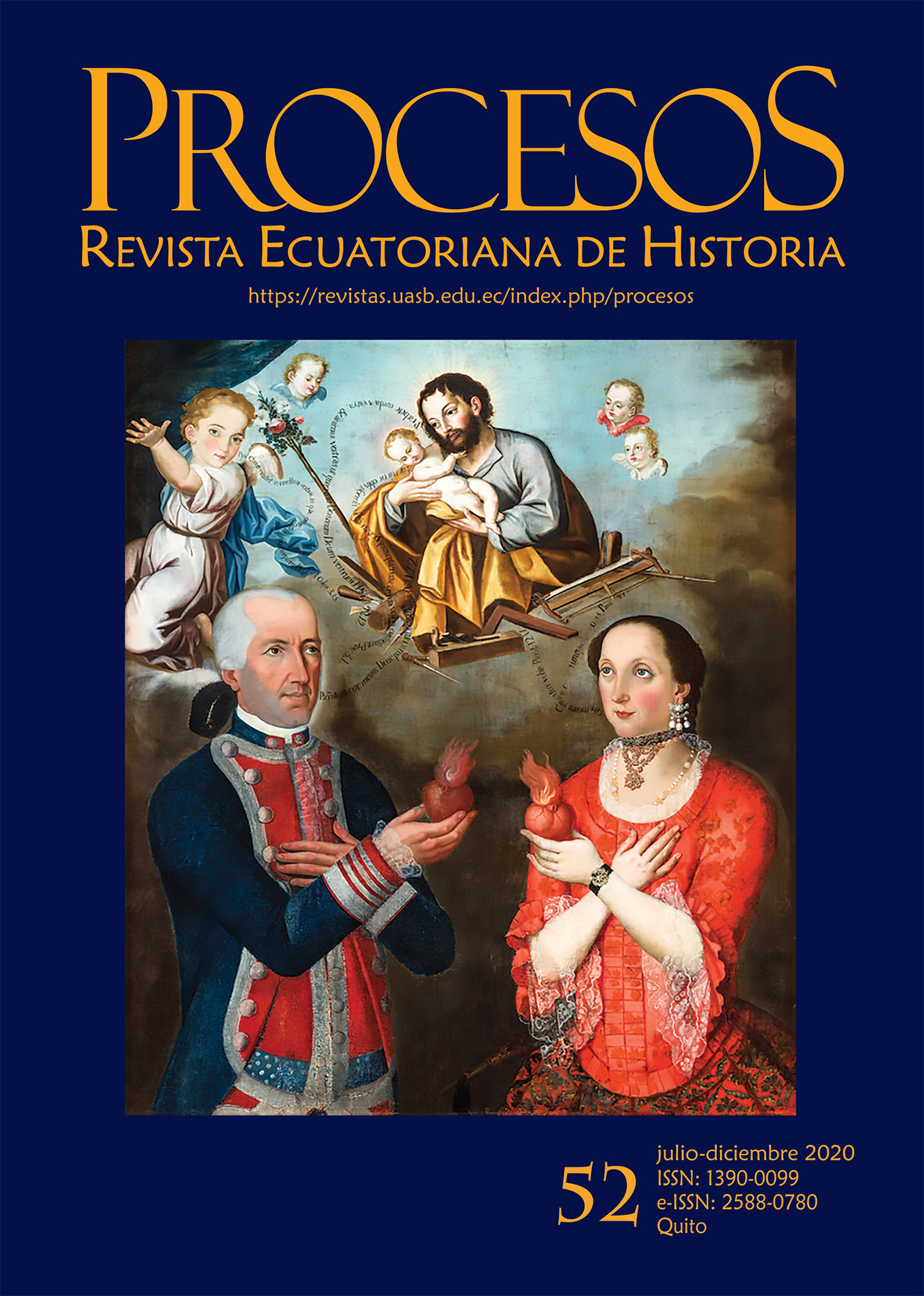La figura del rey, estrategias discursivas y simbólicas en las sublevaciones surandinas, 1780-1781
Contenido principal del artículo
Resumen
El artículo indaga el uso de la figura del rey durante las rebeliones indígenas acaecidas en La Paz, a fines del siglo VIII. A partir de un informe sobre el levantamiento, se da cuenta de los argumentos de los sublevados, quienes aseguraban actuar por voluntad del rey, alegato con el que lograron intervenir en la política colonial. Al tiempo que los oficiales realistas perdonaron la sublevación usando también la figura del rey, a quien los rebeldes debían acreditar lealtad y obediencia. El incidente permite analizar tanto el aspecto pragmático de la delegación del poder real, como el uso simbólico de la figura del rey.
Descargas
Detalles del artículo

Esta obra está bajo una licencia internacional Creative Commons Atribución-NoComercial-CompartirIgual 4.0.
Referencias
FUENTES Y BIBLIOGRAFÍA
FUENTES PRIMARIAS
Archivos
Archivo y Bibliotecas Nacionales de Bolivia (ABNB).
Fondo Audiencia de la Plata.
Archivo General de la Nación (AGN).
Fondo Virrey y Secretaría de Cámara.
Fuentes primarias publicadas
De Angelis, Pedro. Colección de obras y documentos relativos a la historia antigua y moderna de las provincias del Río de la Plata; ilustrados con notas y disertaciones. Buenos Aires: Imprenta del Estado, 1836.
La Gaceta de Lima, n.° 13. Del 1 de agosto al 15 de octubre de 1760.
Relación histórica de los sucesos de la rebelión de José Gabriel Tupac-Amaru en las provincias del Perú, el año de 1780. Buenos Aires: Imprenta del Estado, 1836.
FUENTES SECUNDARIAS
Andrade, Claudio. La rebelión de Tomás Katari. Sucre: IPTK / CIPRES, 1994.
Bajtin, Mijail. Problemas de la poética de Dostoevski. Ciudad de Mexico: Fondo de Cultura Económica, 2005.
Cañeque, Alejandro. “Cultura vicerregia y Estado colonial. Una aproximación crítica al estudio de la historia política de la Nueva España”. Historia Mexicana LI, n.o 1 (julio-septiembre 2001): 5-57.
Caselli, Elisa, coordinadora. Justicias, agentes y jurisdicciones de la Monarquía Hispánica a los Estados nacionales (España y América, siglos XVI-XIX). Madrid: Fondo de Cultura Económica, 2017.
De la Puente, José. Andean Cosmopolitans. Seeking Justice and Reward at the Spanish Royal Court. Austin: University of Texas Press, 2018.
Del Valle de Siles, María Eugenia. Historia de la rebelión de Tupac Catari, 1781-1782. La Paz: Plural, 2011.
Díaz, María Elena. The Virgin, the King, and the Royal Slaves of El Cobre: Negotiating Freedom in Colonial Cuba, 1670-1780 (Palo Alto: Standford University Press, 2002.
Elliot, John. “A Europe of composite monarchies”. Past & Present, n.o 137 (1992): 48-71.
Flores Galindo, Alberto. Buscando un Inca: Identidad y utopía en Los Andes. Habana: Casa de las Américas, 1986.
Kantorowicz, Ernst. The King’s two bodies: A study in Mediaeval Political Theology. Princeton: Princeton University Press, 1957.
Garrett, David T. Sombras del Imperio: La nobleza indígena del Cuzco, 1750-1825. Lima: Instituto de Estudios Peruanos, 2009.
Hidalgo Lehuede, Jorge. “Amarus y Cataris: Aspectos mesiánicos de la rebelión indígena de 1781 en Cusco, Chayanta, La Paz y Arica”. Chungará, n.o 10 (1983): 117-138.
Lewin, Boleslao. Túpac Amaru. Su época, su lucha, su hado. Buenos Aires: Leviatán, 1995.
Madrazo, Guillermo. “Túpac Amaru. La rebelión, Dios y el rey”. Andes, n.o 12 (2001): 1-40.
O’Phelan, Scarlett. La gran rebelión en los Andes: De Túpac Amaru a Túpac Katari. Cuzco: Centro de Estudios Regionales Andinos “Bartolomé de las Casas”, 1995.
——. “Navarro, José María. Una denuncia profética desde el Perú a mediados del siglo XVIII: El Planctus indorum christianorum in America peruntina”. Histórica 25, n.o 2 (2001): 331-335.
——. “Una rebelión abortada. Lima 1750: La conspiración de los indios olleros de Huarochirí”. Varia Historia, nº 24 (2000): 7-32.
Osorio, Alejandra. “El Rey en Lima. El simulacro real y el ejercicio del poder en la Lima del diecisiete”. Documento de trabajo, n.o 140 (Lima: Instituto de Estudios Peruanos, 2004): 5-50.
Sahlins, Marshall. Islas de historia. La muerte del capitán Cook. Metáfora, Antropología e Historia. Barcelona: Gedisa, 1997.
Salinas, Roberto. Cataris, Amarus y Apazas: Precursores indígenas de la Independencia americana. Sucre: Casa de la Libertad, 2013.
Serulnikov, Sergio. “Lo que invocar la figura del Rey y la justicia regia significaba (y lo que no). Monarquismo popular en Charcas tardocolonial”. Varia Historia 35, n.o 67 (2019): 37-82.
——. Revolución en los Andes: La era de Túpac Amaru. Buenos Aires: Sudamericana, 2010.
Szeminski, Jan. “Why kill the Spaniard? New Perspectives on Andean Insurrectionary Ideology in the 18th Century”. En Resistance, Rebellion, and Consciousness in the Andean Peasant World, 18th to 21th Century, editado por Steve Stern, 66-92. Madison: The University of Wisconsin Press, 1987.
Tandeter, Enrique. Coacción y mercado. La minería de la plata en el Potosí colonial: 1629-1826. Cuzco: Centro de Estudios Regionales Andinos “Bartolomé de las Casas”, 1992.
Thomson, Sinclair. Cuando solo reinasen los indios. La política aymara en la era de la insurgencia. La Paz: Muela del Diablo, 2006.
Walker, Charles. La rebelión de Túpac Amaru. Lima: Instituto de Estudios Peruanos, 2015.

